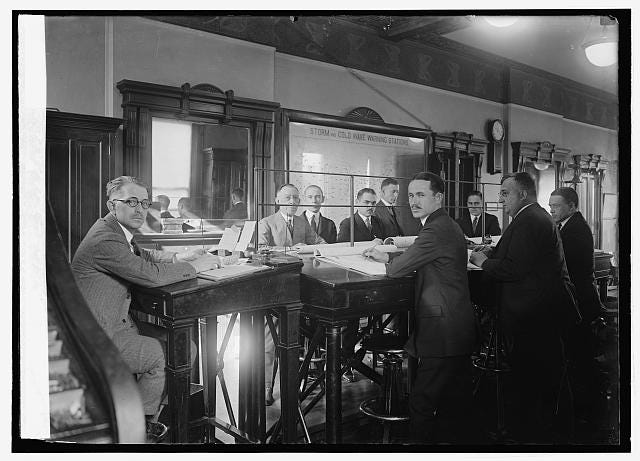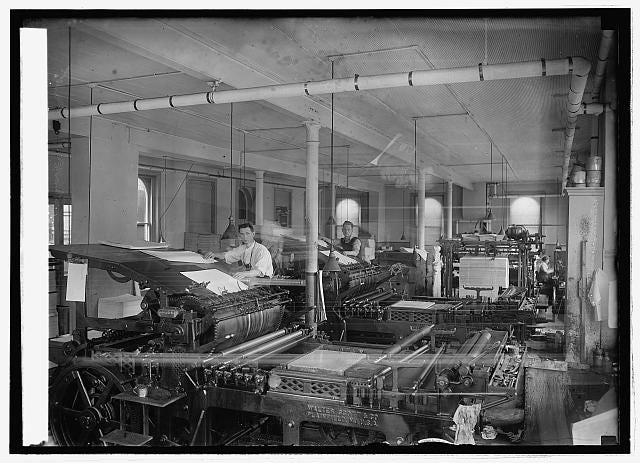There would be a meteorological explanation for the rain that pounded the Ohio and Mississippi valleys in January 1937. It would come from the Washington Forecast District of the U.S. Weather Bureau. But it would come in February 1937.
No one was at fault. Try as they might — and the Weather Bureau did try — predicting rainfall before it happened was guesswork at the time due to the limitations of atmospheric science.
In the final days of 1936, neither the weather nor the Ohio River were noteworthy.
“Conditions prevailing throughout the months of October, November, and the first 3 weeks of December gave no indication of the unusual flood that was to follow,” the Weather Bureau’s Bennett Swenson would write in a lengthy report distributed in the summer of 1938. “[B]y the beginning of the last week of December low stages prevailed along the entire [Ohio River] and practically all of its tributaries.”
Those dreaming of a white Christmas were disappointed. A light snow fell prior to December 25, but due to mild temperatures and light rain the snow disappeared as quickly as Christmas dinner.
As the more than 11 million people who lived in the Ohio River basin and part of the Mississippi Valley bid farewell to 1936, the two big rivers that quenched their thirst and nourished their lands were below normal levels from Cincinnati to New Orleans, where their waters entered the Gulf of Mexico.

Weeks later C.L. Mitchell of the Washington Forecast District would report that “an abnormal barometric pressure distribution prevailed over most of the northern hemisphere.”
Pressure was persistently and abnormally high at, and up to at least 3 miles above the surface of the earth, from the south Atlantic states and the eastern Gulf of Mexico eastward over the Bahamas and the region of Bermuda, as well as over the Pacific Ocean west of our coast and northeast of the Hawaiian Islands. This pressure distribution resulted in a continuous northward and northeastward movement of tropical air masses over the area roughly from Louisiana and Tennessee eastward to the Atlantic states, New England and New York, while air masses of polar origin moved southward almost continuously over much of the western half of the Pacific states, the Plateau and Rocky Mountain regions, the Plain states, and, at times, the upper Mississippi Valley.
This was the Weather Bureau’s description of a massive weather system that produced exceptional rainfall. Essentially, it was the collision of a tropical, moist southern air mass and a polar northern air mass — two fronts that stalled above the Ohio Valley and points south.
The declaration from Mitchell of “an abnormal barometric pressure distribution” that covered “most of the northern hemisphere” was a clue to something extraordinary.
The Weather Bureau’s first description of the odd weather conditions came after the fact, like a sportswriter describing the astonishing outcome of a sporting event sometime later in an article or book. A more in-depth explanation of the record January rainfall would appear in a 55-page government report issued in June 1938.
The yet-to-be-written official reports were of no use to the millions of people who lived beneath the heavy skies.
The precipitation that began in states located south of the Ohio River would continue throughout most of January. In addition, the weather system that produced the heavy rain would distribute that rain to a wider area, including states along the Ohio River: Pennsylvania, West Virginia, Ohio, Indiana, Kentucky and Illinois.
As the month of January would unfold, people throughout the Ohio Valley would watch rain fall from the sky day after day. They would wonder when the rain would end. They would learn that no one in Washington, D.C., Cincinnati, Louisville or elsewhere would be able to tell them with any degree of certainty.
But in the first week of the new year, when the rain began to fall in the basins of the Ohio and Mississippi rivers, men, women and children went about their daily lives without a thought about record rain, the coming high water and the river mud that would stick to everything.
Start at the beginning of The 1937 Flood Journal or access the archives.
FRIED BOLOGNA: Family Stories from the American Midwest and Upland South Join me for stories about my ancestors who lived, worked and traveled in the hills and along the rivers of Arkansas, Illinois, Indiana, Iowa, Missouri and beyond.






I started reading your posts out-of-order, so I mistakenly assumed that the heavy rain that caused the flood was just a day or two, like a flash flood. But to have heavy rain for almost a month is almost unfathomable! Thanks for sharing this story--I'd never heard of the 1937 Flood until stumbling across your Substack.